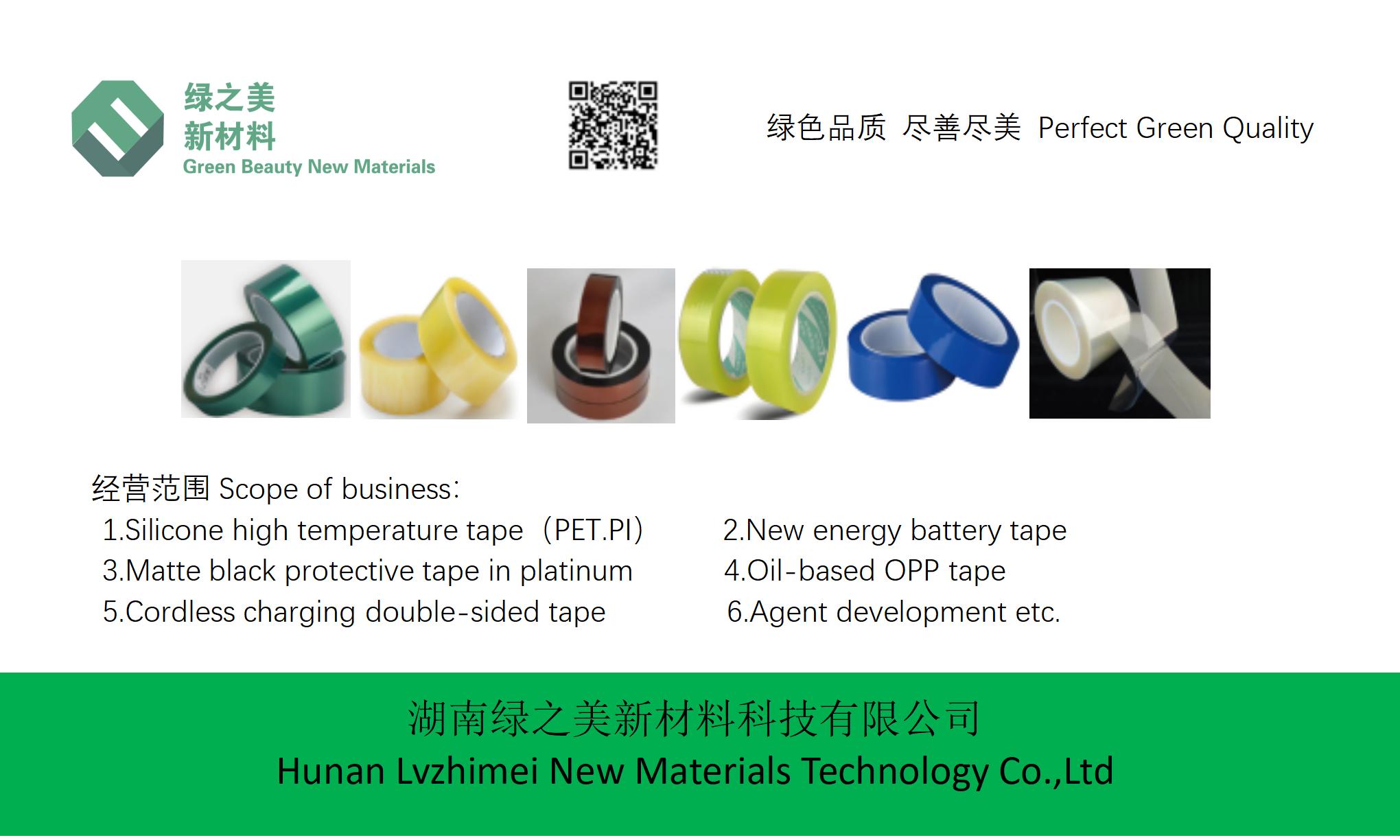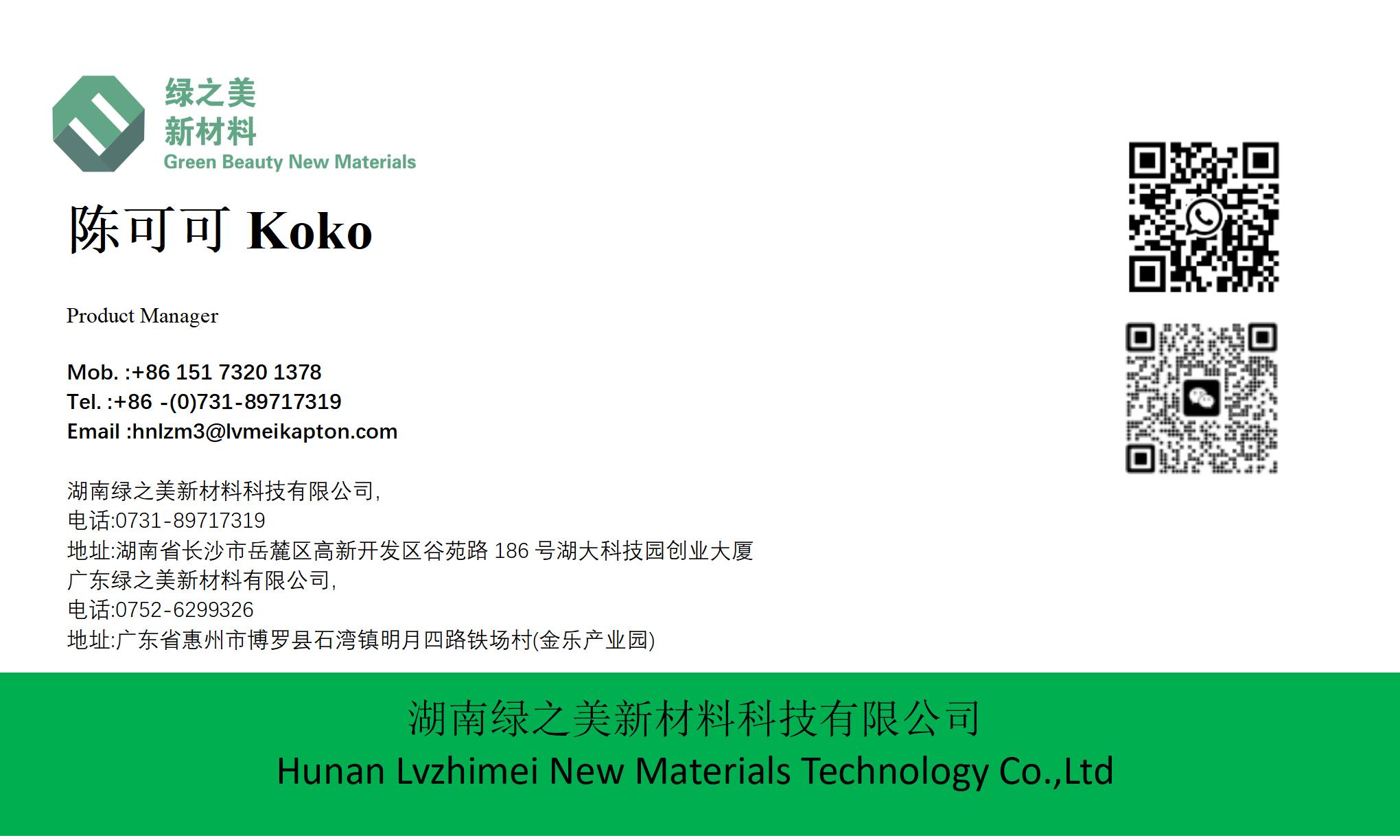hnlzm@lvmeikapton.com
+86 13787123465


Hunan Lvzhimei New Material Technology Co., Ltd.


NameDescriptionContent
Who Invented Kapton Tape and How Has It Evolved? |https://www.lvmeikapton.com/
Source:
|
Author:Koko Chan
|
Published time: 2025-05-22
|
162 Views
|
Share:
Kapton tape, a versatile and resilient adhesive material, has revolutionized multiple industries with its exceptional thermal and electrical properties. This article delves into the history of Kapton tape, tracing its invention by DuPont and exploring its evolution across decades, highlighting its technological advancements and future prospects.
Who Invented Kapton Tape and How Has It Evolved?
Kapton tape, a versatile and resilient adhesive material, has revolutionized multiple industries with its exceptional thermal and electrical properties. This article delves into the history of Kapton tape, tracing its invention by DuPont and exploring its evolution across decades, highlighting its technological advancements and future prospects.
1. DuPont’s Original DevelopmentKapton tape’s foundation lies in the invention of polyimide (PI) film, a high-performance polymer developed by DuPont in the 1960s. The material’s creation was a response to the growing demand for advanced insulating materials capable of withstanding extreme temperatures and harsh environments.
1.1 The Birth of KaptonKapton’s story begins with DuPont’s research into polyimide chemistry. In the late 1950s, scientists at DuPont, led by Dr. William Hale and his team, synthesized polyimide by combining aromatic dianhydrides and diamines. The resulting polymer exhibited remarkable thermal stability, mechanical strength, and electrical insulation properties. Kapton, branded as DuPont’s proprietary name for this PI film, emerged as a commercial product in the 1960s, initially targeting aerospace and defense applications.
Key Properties and Early AdvantagesKapton’s unique properties include:
●
Temperature Resistance: Withstanding temperatures from -269°C to 400°C.
●
Electrical Insulation: Low dielectric constant and high breakdown voltage.
●
Chemical Resistance: Immunity to acids, solvents, and radiation.
●
Dimensional Stability: Minimal expansion or contraction under thermal stress.
These attributes made Kapton ideal for insulating wires and components in spacecraft, missiles, and early high-tech electronics. Notably, Kapton played a crucial role in NASA’s Apollo missions, protecting electrical systems in lunar modules and spacecraft.
1.2 Technological Breakthroughs at DuPontDuPont’s continuous research refined Kapton’s performance. In the 1970s, advancements in coating techniques allowed for the production of PI films with enhanced adhesion and flexibility. Additionally, the development of “Kapton F” variants, featuring fluoropolymer coatings, improved abrasion resistance and chemical inertness.
Commercial ExpansionBy the 1980s, Kapton tape transitioned from niche aerospace use to broader industrial applications. Its adoption in transformers, generators, and automotive electronics marked a shift towards mainstream markets. DuPont’s collaborations with electronics manufacturers further solidified Kapton’s position as a critical component in printed circuit boards (PCBs) and cable insulation.
2. Modern Adaptations in ElectronicsThe 21st century witnessed Kapton tape’s integration into cutting-edge technologies, driven by miniaturization, high-speed data transmission, and sustainability demands.
2.1 Electronics and MicroelectronicsIn modern electronics, Kapton tape serves as:
●
PCB Protection: Shielding gold fingers from corrosion and abrasion.
●
Flexible Circuitry: Enabling bendable displays and wearable devices.
●
EMI/RFI Shielding: Blocking electromagnetic interference in 5G devices.
Innovative Variants
●
ESD Kapton Tape: Incorporating static dissipative coatings for semiconductor fabrication.
●
Thermal Conductive Kapton: Enhancing heat dissipation in high-power LEDs and CPUs.
●
Nano-Reinforced Kapton: Combining PI with carbon nanotubes for superior strength.
2.2 Automotive and Energy IndustriesKapton tape’s role in electric vehicles (EVs) and renewable energy is pivotal:
●
Battery Pack Insulation: Preventing thermal runaway in lithium-ion cells.
●
Solar Panel Encapsulation: Protecting junction boxes from UV degradation.
●
Transformer Coils: Ensuring long-term reliability in high-voltage systems.
2.3 Advancements in Manufacturing ProcessesContemporary production techniques focus on:
●
Precision Coating: Applying nano-thin adhesive layers for microelectronic assembly.
●
Laser-structuring: Creating custom patterns for intricate component layouts.
●
Eco-friendly Formulations: Developing solvent-free adhesives and recyclable PI films.
3. Future InnovationsAs industries demand smarter, greener, and more durable materials, Kapton tape’s evolution continues.
3.1 Smart Materials IntegrationResearch is exploring:
●
Self-Healing Kapton: Polymers that autonomously repair cracks under thermal stress.
●
Thermochromic Tape: Changing color to indicate temperature thresholds.
●
Piezoelectric Kapton: Converting mechanical energy into electrical signals for IoT sensors.
3.2 High-Temperature ExtremesNext-gen Kapton aims for 500°C+ continuous operation through:
●
Chemical Modification: Altering PI’s aromatic ring structure for enhanced thermal stability.
●
Hybrid Composites: Blending PI with ceramic nanoparticles.
3.3 Sustainability and Circular EconomySustainable innovations include:
●
Bio-based PI: Deriving precursor monomers from renewable sources (e.g., lignin).
●
Closed-loop Recycling: Recovering PI from end-of-life electronics through solvent dissolution.
●
Low-Carbon Manufacturing: Optimizing energy efficiency in film extrusion processes.
3.4 Emerging MarketsKapton tape’s future growth will be fueled by:
●
Space Exploration: Advancing lightweight, radiation-resistant variants for Mars missions.
●
Quantum Computing: Insulating superconducting circuits at cryogenic temperatures.
●
Biomedical Devices: Biocompatible Kapton for implantable electronics.
ConclusionFrom its origins as a space-age material to its current status as an essential component in modern electronics, Kapton tape’s journey embodies human ingenuity in materials science. DuPont’s pioneering work, coupled with continuous technological refinements, has transformed Kapton into a symbol of reliability and adaptability. As industries evolve towards sustainability and智能化, Kapton tape’s evolution will remain at the forefront, bridging the gap between performance demands and environmental stewardship.



Hunan Lvzhimei New Material Technology Co., Ltd.
Quick Links
Product Categories
© 2024 Hunan Lvzhimei New Material Technology Co., Ltd.All Rights Reserved. Designed by Erge
0731 - 89717319
hnlzm@lvmeikapton.com
+86 13787123465
Room 502, Chuangye Building, No186, Guyuan Road, High-Tech District, Changsha, Hunan, China
CONTACT



